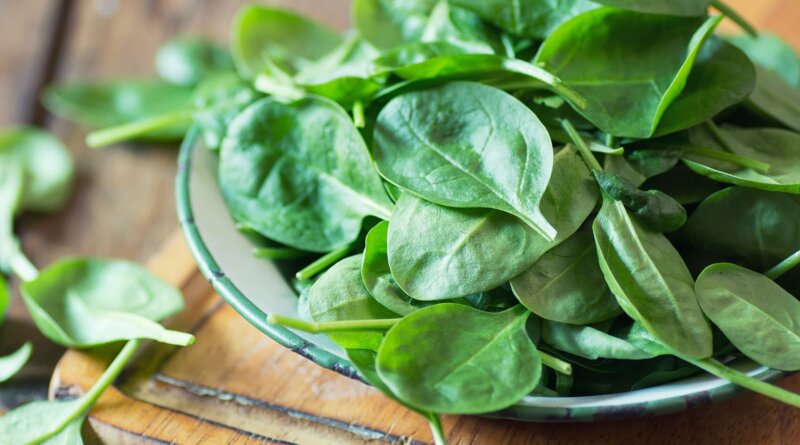High on the ‘Dirty Dozen’ List
Apr. 7, 2022 – Once again, strawberries and spinach, along with kale and collard and mustard greens, top this year’s “Dirty Dozen” list, an annual and controversial ranking of nonorganic fruits and vegetables based on the amount of pesticides found in samples of the foods.
The yearly report comes from the Environmental Working Group, a nonprofit organization dedicated to improving human health and the environment, and also includes a “Clean 15” list of produce.
An industry group for growers of organic and nonorganic produce, along with some dietitians, make strong objections to the report, saying it raises unnecessary alarm and could discourage people from eating enough fruits and vegetables.
The report gives people valuable information, says the Environmental Working Group’s Alexis Temkin, PhD, a toxicologist, so they can make informed choices about the fruits and vegetables they buy.
Environmental Working Group researchers get data from the U.S. Department of Agriculture’s samplings of pesticide residue on produce done yearly or every 2 years, and from the FDA for honeydew melon, which the USDA doesn’t test for.
2022 Results: Dirty Dozen
More than 70% of the conventionally grown produce had detectable pesticide residue, the Environmental Working Group found. These fruits and vegetables were found to have the most pesticide residues this year:
1. Strawberries
2. Spinach
3. Kale, and collard and mustard greens
4. Nectarines
5. Apples
6. Grapes
7. Bell and hot peppers
8. Cherries
9. Peaches
10. Pears
11. Celery
12. Tomatoes
2022 Results: Clean 15
Almost 70% of the Clean Fifteen fruit and vegetable samples had no detectable residues of pesticides, the Environmental Working Group found. Avocados and sweet corn were the cleanest, with less than 2% of samples showing any detectable pesticides.
1. Avocados
2. Sweet corn
3. Pineapple
4. Onions
5. Papaya
6. Sweet peas (frozen)
7. Asparagus
8. Honeydew melon
9. Kiwi
10. Cabbage
11. Mushrooms
12. Cantaloupe
13. Mangoes
14. Watermelon
15. Sweet potatoes
More on Methods
To produce the report, the Environmental Working Group analyzed more than 44,000 samples taken by the FDA and USDA, which tests a subset of produce each year.
Before testing, USDA scientists prepare each fruit or vegetable the way people tend to do themselves, such as peeling those with inedible peels and rinsing produce with edible peels.
The Environmental Working Group takes six measures of pesticide contamination into account:
- Percent of samples tested with detectable pesticides
- Percent with two or more detectable pesticides
- Average number of pesticides in a single sample
- Average amount of pesticides, expressed in parts per million
- Maximum number of pesticides on a single sample
- Total number of pesticides found.
Next, the Environmental Working Group researchers ranked the 46 fruits and vegetables analyzed, calculated a total score, and drew up the lists.
Industry Criticism
The Alliance for Food and Farming, an industry group that represents organic and nonorganic farmers, growers, and shippers, takes strong issue with the annual report, noting that pesticide residues on conventional produce are low, if present at all.
“Ignore or discount the list,” says Teresa Thorne, executive director of the alliance. Like others, she fears that if an organic fruit or vegetable costs more, as they often do, consumers will bypass produce altogether, especially low-income consumers. “Pick what’s best for you and your family,” she says.
Temkin of the Environmental Working Group acknowledges that all the residues found were within legal limits set by the Environmental Protection Agency. “Although the levels are legal, that doesn’t necessarily mean they are safe,” she says.
The point of the rankings, she says, is to give people information so they can choose whether to buy organic or nonorganic produce. “Our recommendation is to buy the ones on the ‘Dirty Dozen’ list organic when available, or focus on the ‘Clean 15’ list.”
The Environmental Working Group depends on a broad base of support overall, according to information on its website, including companies that produce organic products such as Stonyfield Farms, Earthbound Farms, and Organic Valley.
But according to Iris Myers, an Environmental Working Group spokesperson, the Shopper’s Guide with the clean and dirty produce rankings “isn’t funded by any companies – only grants and individual donors. We don’t allow companies to sponsor any of our research reports.”
In the report, the Environmental Working Group also notes that the EPA has taken action to prohibit the pesticide chlorpyrifos in food, after the group and others spent years asking for the ban.
Dietitians Weigh In
The report uses “fear-branded messages to steer people away from eating conventionally grown fruits and veggies,” says Christine Rosenbloom, PhD, a retired Georgia State University professor and an Atlanta nutrition consultant.
She reminds people that “both organic and conventional agriculture use pesticides to protect the crop. Organic famers use different pesticides that are described as ‘natural,’ but natural doesn’t mean safer, better, or chemical-free,” she says.
She refers people to the Pesticide Residue Calculator from toxicologists at the University of California, Riverside, posted on the consumer site the Alliance for Food and Farming.
The calculator helps reassure people that trace amounts of chemicals on conventionally grown produce are not a hazard to your health, Rosenbloom says. “Using myself as an example, I could eat 850 apples or 13,225 servings of blueberries in one day without any effect, even in the worst-case scenario of the fruit having the highest pesticide residue recorded by the USDA.”
“It’s one more example of putting good and bad food labels on foods when it isn’t deserved,” says Connie Diekman, a food and nutrition consultant in St. Louis and a former president of the Academy of Nutrition and Dietetics. “The amounts they are measuring are so much below the tolerance level set by the EPA.”
The report shouldn’t scare people, including parents worried about serving their children conventional produce, she says.
As for how much produce to eat, “the best advice is to have half your plate be fruits and vegetables,” Diekman says. Under current Dietary Guidelines for Americans, an intake of 2½ “cups equivalent” of vegetables and 2 “cups equivalent” of vegetables is recommended daily for adults.
Editor’s note: Connie Diekman is on the Bayer LEAD Network, Leaders Engaged in Advancing Dialogue. Rosenbloom reports an honorarium from a bean industry group for developing a webinar on healthy aging.





best canadian mail order pharmacies https://canadadrugs.pro/# – legitimate online pharmacies india canadadrugs.pro
canada prescriptions online https://canadadrugs.pro/# – canadian pharcharmy online canadadrugs.pro
best india pharmacy https://medicinefromindia.store/ indian pharmacy online
cytotec abortion pill https://cytotec24.com/ cytotec abortion pill
liquid tamoxifen https://nolvadex.guru/ tamoxifen citrate pct
abella danger izle https://abelladanger.online/ Abella Danger
lana rhoades videos – https://lanarhoades.pro/ lana rhoades videos
eva elfie full video https://evaelfie.site/ eva elfie new video
aviator online https://aviatormocambique.site como jogar aviator
aviator game: https://aviatorghana.pro/ aviator betting game
aviator bet https://aviatorjogar.online/ – estrela bet aviator
aviator oyna slot: https://aviatoroyunu.pro pin up aviator
sweet bonanza taktik https://sweetbonanza.bid/ – güncel sweet bonanza
mexico drug stores pharmacies: pharmacies in mexico that ship to usa mexican online pharmacies prescription drugs mexicanpharmacy.shop